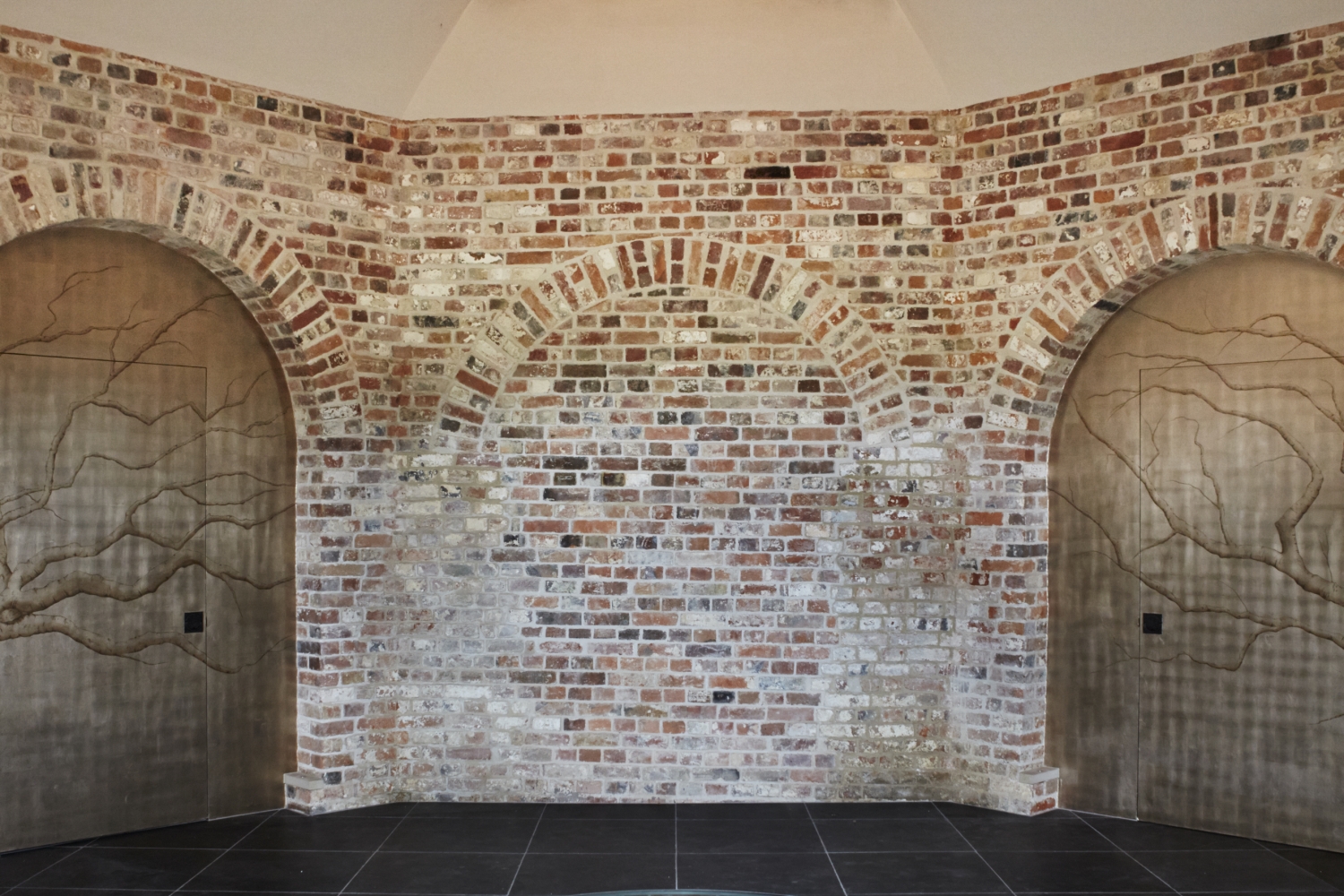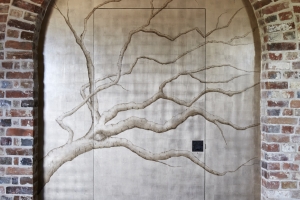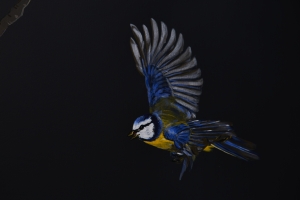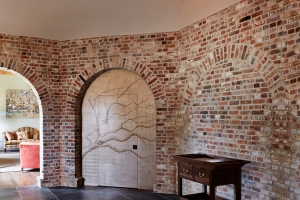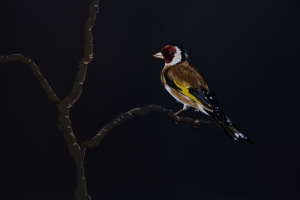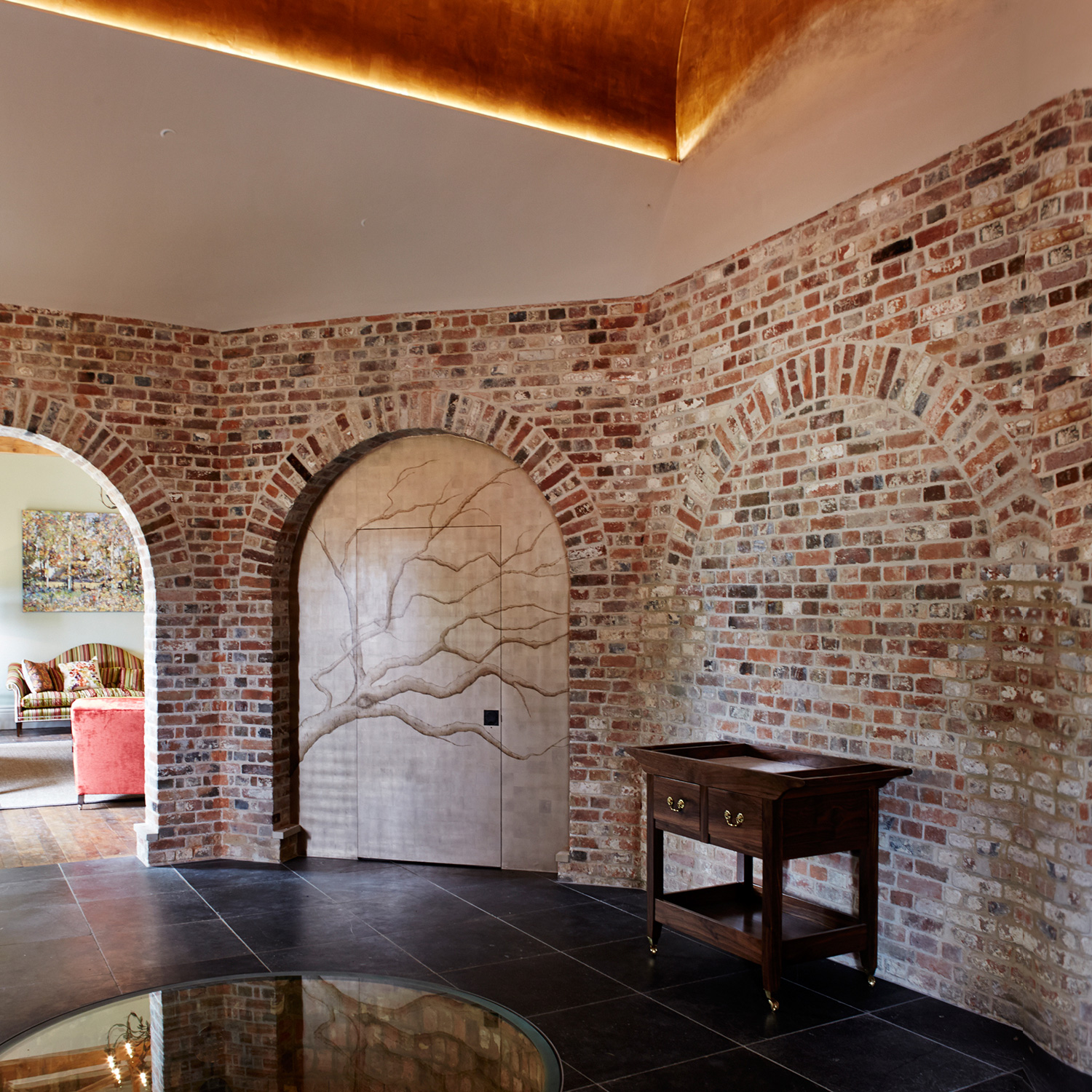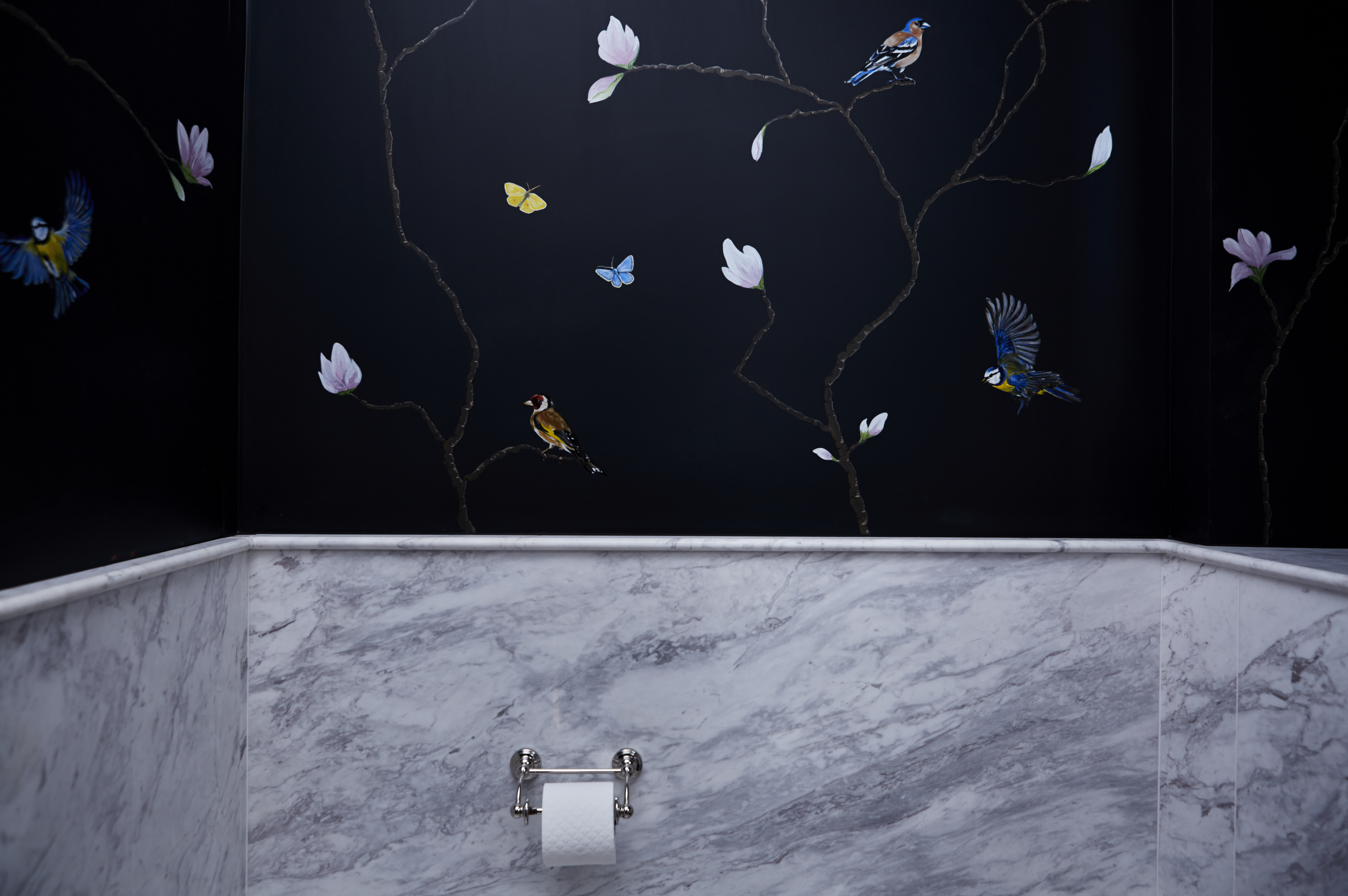Hungerford Park
Private Residence
Hungerford Park was originally established in 1247 as a deer park, for Simon de Montfort. The estate featured a grand country house which fell into disrepair and was demolished in the late 1950’s. Hungerford Park today is a working farm and the estate houses a small lodge which was entirely renovated by the current owners in 2016.
The lodge is primarily used for entertaining and private family events such as weddings and family celebrations. Following the renovation, Lottie Radford was commissioned to undertake specialist decorating for three areas: the powder room, the arched doors and the domed ceiling. The overall brief was to create a feeling of sumptuous luxury that reflected the beauty and majesty of the surrounding landscape.
For the Powder Room, we created a hand painted ‘wallpaper’ that reflects the British countryside. Intricate songbirds, beetles, pheasants, butterflies and magnolia buds were painstakingly painted onto a midnight black background.
The lodge is situated over a well that is covered by glass and lit up from within. The well forms the centrepiece of the lodge above which is a magnificent domed ceiling. Highly unusual in its design, we wanted to draw attention to it so we hand trowelled bronze paint onto it and used black wax to distress and age the surface. The tones reflect those of the surrounding brickwork, unifying the different materials and drawing on the heritage of the building.
Surrounding the central atrium of the lodge are a series of internal arches within the brick walls, two of which have doors to other rooms in the lodge. We wanted to again make features out of these doors so we used champagne gold leaf to gild them. We then further embellished the doors with hand-painted branches, using the trees on the estate as our inspiration and once again, bringing the beauty of the surrounding estate inside.
We loved working on Hungerford Park – it gave us a great chance to really get our creative juices flowing and to further develop some exciting new techniques.
Hungerford Park was originally established in 1247 as a deer park, for Simon de Montfort. The estate featured a grand country house which fell into disrepair and was demolished in the late 1950’s. Hungerford Park today is a working farm and the estate houses a small lodge which was entirely renovated by the current owners in 2016.
The lodge is primarily used for entertaining and private family events such as weddings and family celebrations. Following the renovation, Lottie Radford was commissioned to undertake specialist decorating for three areas: the powder room, the arched doors and the domed ceiling. The overall brief was to create a feeling of sumptuous luxury that reflected the beauty and majesty of the surrounding landscape.
For the Powder Room, we created a hand painted ‘wallpaper’ that reflects the British countryside. Intricate songbirds, beetles, pheasants, butterflies and magnolia buds were painstakingly painted onto a midnight black background.
The lodge is situated over a well that is covered by glass and lit up from within. The well forms the centrepiece of the lodge above which is a magnificent domed ceiling. Highly unusual in its design, we wanted to draw attention to it so we hand trowelled bronze paint onto it and used black wax to distress and age the surface. The tones reflect those of the surrounding brickwork, unifying the different materials and drawing on the heritage of the building.
Surrounding the central atrium of the lodge are a series of internal arches within the brick walls, two of which have doors to other rooms in the lodge. We wanted to again make features out of these doors so we used champagne gold leaf to gild them. We then further embellished the doors with hand-painted branches, using the trees on the estate as our inspiration and once again, bringing the beauty of the surrounding estate inside.
We loved working on Hungerford Park – it gave us a great chance to really get our creative juices flowing and to further develop some exciting new techniques.

